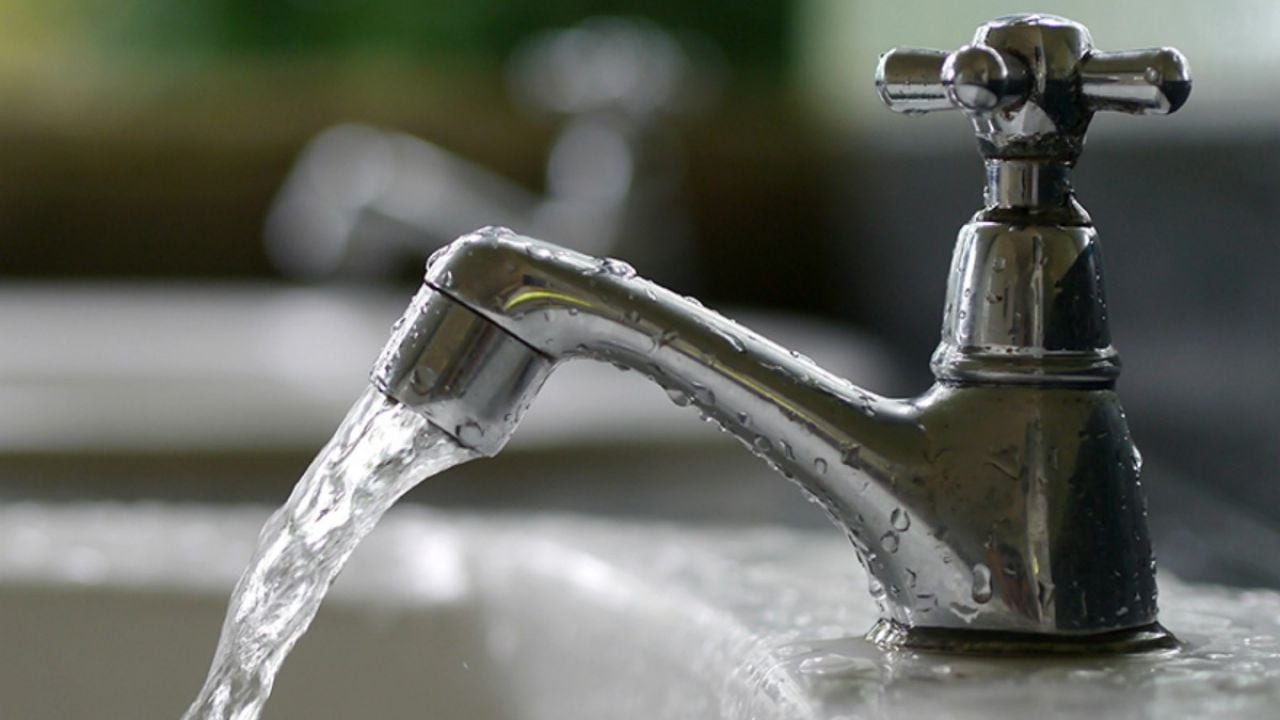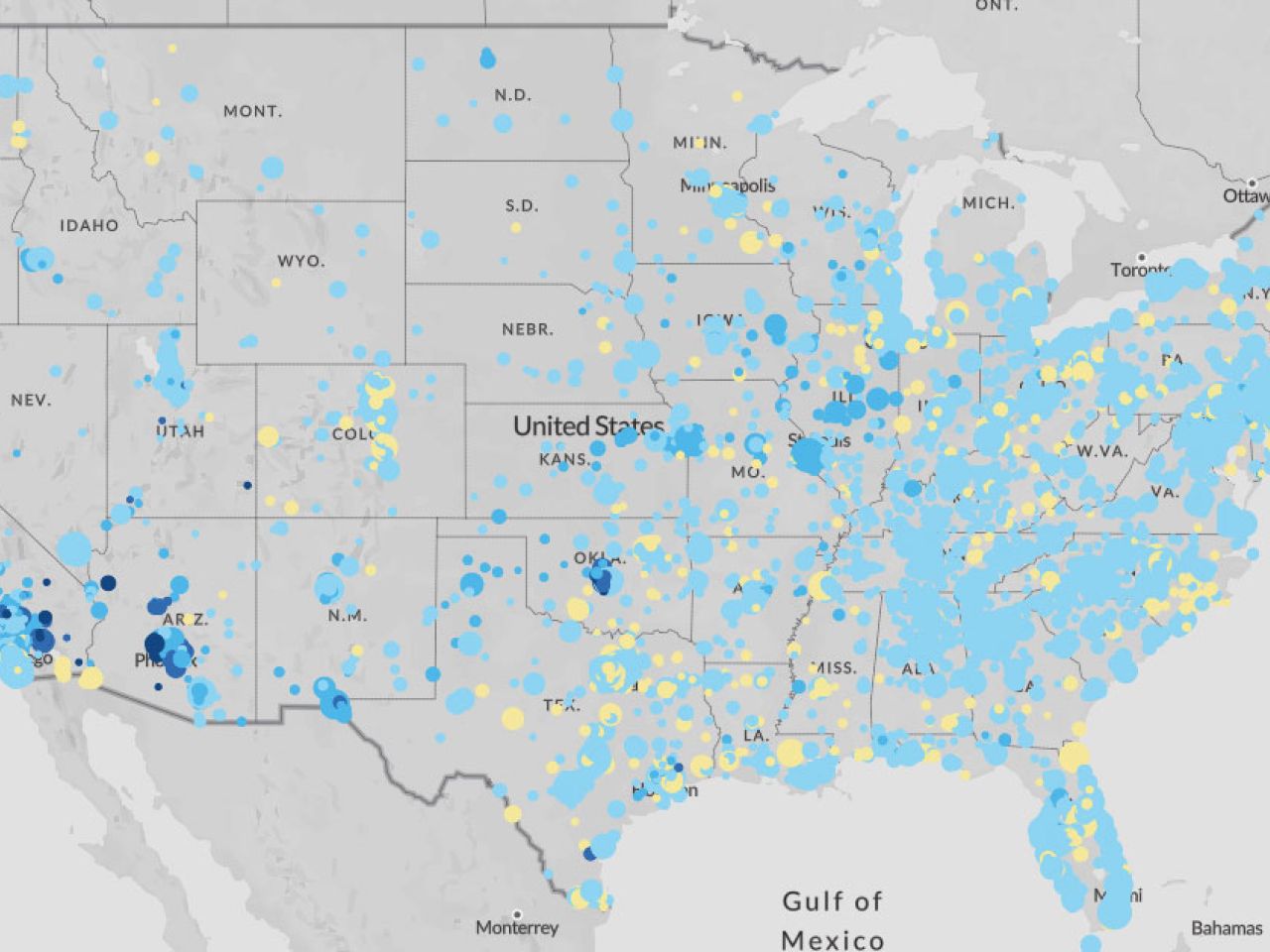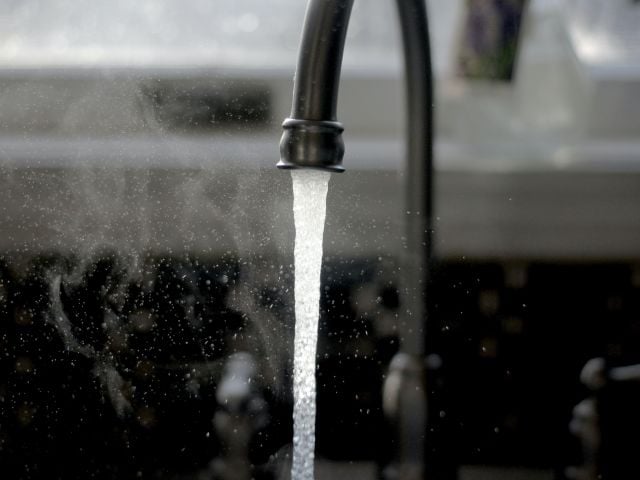
Hexavalent chromium, or chromium-6, is the cancer-causing chemical that poisoned the community of Hinkley, Calif., made notorious by the 2000 film “Erin Brockovich.”
Chromium-6 is a form of the element chromium that is usually produced by industrial processes but can occur naturally. It is commonly used for anti-corrosion metal coating, wood preservation and textile dyeing. It has been detected in groundwater because of these industries’ pollution, and from natural gas compression stations that use it as an anti-corrosion agent in cooling water.
Is chromium-6 in my water?
You can find out whether your tap water is contaminated with chromium-6 by visiting EWG’s interactive map and searching for your ZIP code using our tap water database.
In March, the EWG published an update to our interactive map that shows chromium-6 taints the tap water of 251 million people in the U.S., as well as Guam, Puerto Rico and the Northern Mariana Islands.
From 2013 to 2015, the Environmental Protection Agency required larger water utilities in the U.S. to test for chromium-6. The EWG map is powered by those detection results, as well as recent tests by the state of California that found 918 new sites.
In November, EWG updated its tap water database, revealing more than 8,600 water utilities that detected chromium-6 in their water. Some of the states reporting levels of the carcinogen in tap water above health guidelines include California, Florida, Illinois, Texas and New York. The pollution problem exists nationwide.
Health risks
In 2008, the National Toxicology Program, or NTP, found a significant increase in stomach and intestinal tumors in rats and mice that consumed chromium-6 in drinking water.
In 2015, California scientists reported an increased risk of stomach cancer in workers exposed to chromium-6.
The EPA completed a draft health assessment in 2010 and concluded that relatively low doses of chromium-6 could increase cancer risk. The agency is in the process of updating this assessment.
Chronic exposure to chromium-6 in drinking water can also damage the liver and reproductive systems, and lower the body weight and delay skeletal development of the offspring of lab animals exposed to the chemical.
Scientists have identified infants, children and people taking antacids, as well as people with poorly functioning livers, as being at greater risk from chromium-6 exposure.
Regulation of chromium-6
There is no federal limit for chromium-6 in drinking water.
Based on the 2008 NTP study, California’s Office of Health Hazard Assessment, or OEHHA, in 2011 set a public health goal for chromium-6 in tap water of 0.02 parts per billion, or ppb – the level expected to cause no more than one case of cancer in one million people who drink it for a lifetime.
The EPA established a 100 ppb standard for total chromium – chromium-6 and the mostly harmless chromium-3. By combining chromium-6 and chromium-3, the EPA raised the acceptable water exposure level from OEHHA’s public protective goal of 0.02 ppb to 100 ppb.
It’s also important to note that the EPA standard is based on the potential for skin irritation only. The outdated limit of 100 ppb in water was set in 1991, before it became clear drinking chromium-6 could cause cancer.
California drafted a limit for chromium-6 in drinking water, known as a maximum contaminant level, or MCL. But at 10 ppb – 500 times the state’s public health goal – it was still not sufficiently protective. The state MCL of 10 ppb was struck down in court in 2017, and the state’s water board is preparing a new regulation.
How can I reduce my exposure to chromium-6?
According to the EPA, the most effective filter for removing chromium-6 from water is reverse osmosis. Ion exchange technology is another option for reducing levels in the water in your home. EWG’s water filter guide contains more information about available options.
It is crucial to change water filters on time. Old filters aren't safe, since they harbor bacteria and let contaminants through.
Please visit EWG’s Guide to Safe Drinking Water for tips on how to stay hydrated while reducing your exposure to water pollutants like chromium-6.
Take action
Most levels of chemicals detected in U.S. drinking water are legal. But exposure to these contaminants still contribute to health risks.
The EPA has not added a new contaminant to the list of regulated drinking water pollutants in more than 25 years, and many current drinking water standards are out of date. Reach out to the EPA and urge it to regulate chromium-6 in tap water.
To raise awareness of this toxic contamination, please consider sharing this article and the interactive chromium-6 map on your social media platforms. Tag friends and ask them to learn whether their water might be contaminated by this carcinogen.





